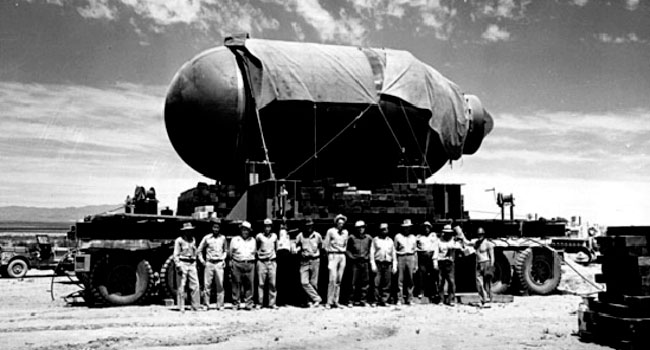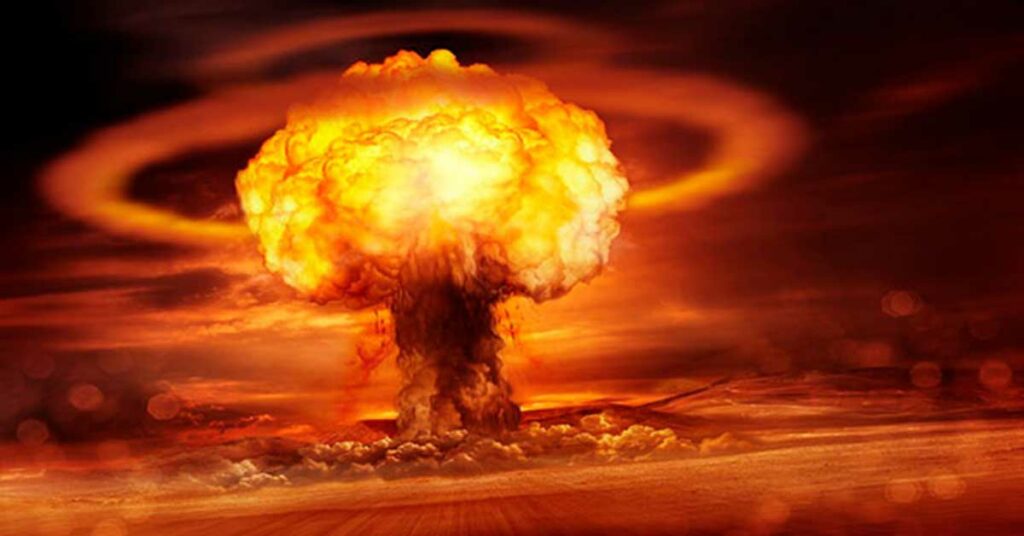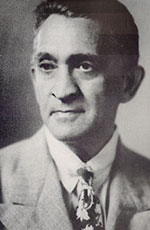- The building of the Atomic Bomb Part 1
- The building of the Atomic Bomb Part 2
- The building of the Atomic Bomb Part 3
- The building of the Atomic Bomb Part 4
While Oak Ridge, Tenn., would make U-235, the fuel for the Hiroshima atomic bomb, Maj. Gen. Leslie R. Groves looked for a site in the West that was far from population centres. It also needed a generous supply of electricity to run the bomb factories and water to cool the reactors.
Hanford, Wash., downriver from the just-completed Grand Coulee Dam and adjacent to the Columbia River, fit the bill. To develop plutonium, the Hanford Site in Benton County in south central Washington was carefully chosen in December 1942 as the perfect place.
About 1,200 residents from the towns of Hanford, White Bluffs and Richland were evacuated. In February 1943, Groves established the Hanford Engineer Works (HEW). The following month, construction began. Fuel rods of uranium were to be irradiated in Hanford reactors to make about a dime-size button of plutonium for every two tons of fuel. The elusive substance then had to be recovered by dissolving the fuel rods in acid and isolating the plutonium in a complex, messy series of steps.
The building of the Atomic Bomb Part 1
The building of the Atomic Bomb Part 2
By 1945, HEW had built 554 buildings, including three reactors; three 250-meter-long plutonium processing canyons; the Gable Mountain vault for plutonium storage; 64 underground high-level waste-storage tanks; uranium fuel fabrication facilities, laboratories and test reactors; 386 miles of roads; 158 miles of railway; 50 miles of electrical transmission lines; four electrical substations; and hundreds of miles of fencing. Between 1943 and 1946, at a cost of $230 million, HEW used 780,000 cubic yards of concrete and 40,000 tons of structural steel. At its peak activity period, 51,000 workers toiled at the site, building 500 factories that housed the world’s biggest reactors. As the factories ran around the clock, chemical and radioactive wastes were dumped into the air, river and soil.
Robert S. Norris, author of Racing for the Bomb, General Leslie R. Groves, The Manhattan Project’s Indispensable Man, points out that Groves was the archetype of the commander as manager.
In his book, Norris distinguishes between leadership and command. Leadership is composed of a “combination of qualities that inspire and motivate others to follow and to achieve goals.” Command, on the other hand, “is a managerial function – the coordinating of military forces.” Leaders do not always make effective commanders, and vice versa.
The Manhattan Project was the most closely guarded secret of the Second World War. Only one man, Lipman Siew, a Lithuanian Jew who had come to the U.S. as a political refugee at the age of 17, was allowed to observe and to know everything about the project. He took the name of William L. Laurence and eventually became a science writer for The New York Times, largely due to his friendship with Herbert Bayard Swope, editor of the New York World and also Bernard Baruch’s personal publicity agent. Laurence stated in Who’s Who that he “was selected by the heads of the atomic bomb project as sole writer and publicist.”
How one could be a public-relations writer for a top-secret project was not explained. Laurence was the only civilian present at the historic explosion of the test bomb on July 16, 1945. Less than a month later, he sat in the co-pilot’s seat of the B-29 on the fateful Nagasaki bombing run.
While there were information leaks, Groves kept a tight rein on all information throughout the project. Everyone who worked on the project had only snippets of information so that no conclusions could be drawn.
In Santa Fe, N.M., residents joked that the nearby Los Alamos complex was making windshield wipers for submarines. “Few people knew what Groves was doing exactly, largely because there was no understanding of the technical aspects of the project,” says Cameron Reed, a professor and chairman of the physics department at Alma College in Alma, Mich., and an expert on the building of the atomic bomb. “Harry Truman didn’t know about the project until he became president, which is extraordinary. He was briefed by Groves and Secretary of War Stimson. By then, it was 1945; the project had been running since 1942.”
Groves was fanatical about secrecy. “He insisted that information be compartmentalized,” says Reed. “The majority of people who worked on the Manhattan Project were only told what they needed to know to do their jobs. They were told not to ask questions.” This is why Groves separated the manufacturing facilities. The uranium production facilities were located in Tennessee, and the plutonium plants were in Washington.
“Groves also made sure that workers weren’t allowed to work in multiple manufacturing facilities, because he feared that they would figure out what was going on,” adds Reed.
The views, opinions and positions expressed by columnists and contributors are the author’s alone. They do not inherently or expressly reflect the views, opinions and/or positions of our publication.




